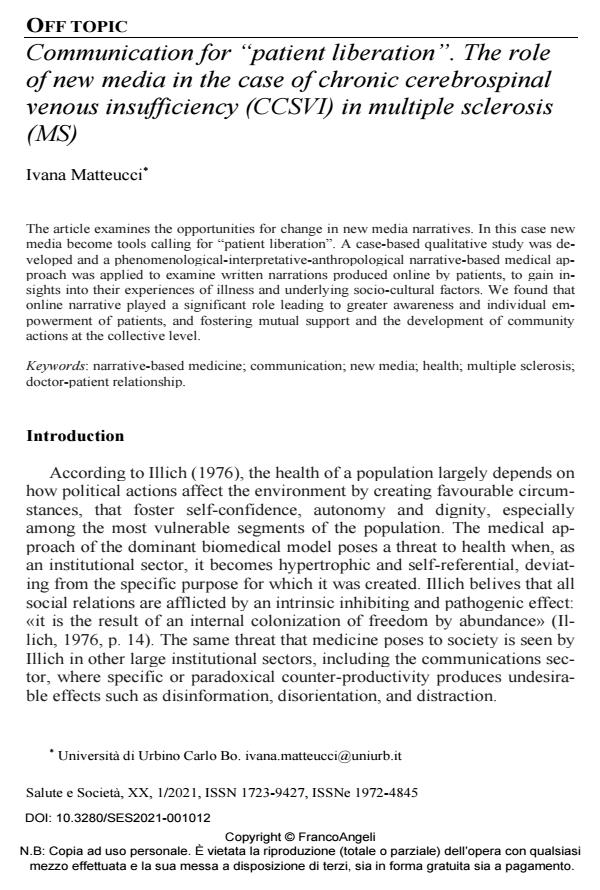Communication for "patient liberation". The role of new media in the case of chronic cerebrospinal venous insufficiency (CCSVI) in multiple sclerosis (MS)
Journal title SALUTE E SOCIETÀ
Author/s Ivana Matteucci
Publishing Year 2021 Issue 2021/1
Language Italian Pages 15 P. 165-179 File size 420 KB
DOI 10.3280/SES2021-001012
DOI is like a bar code for intellectual property: to have more infomation
click here
Below, you can see the article first page
If you want to buy this article in PDF format, you can do it, following the instructions to buy download credits

FrancoAngeli is member of Publishers International Linking Association, Inc (PILA), a not-for-profit association which run the CrossRef service enabling links to and from online scholarly content.
The article examines the opportunities for change in new media narratives. In this case new media become tools calling for "patient liberation". A case-based qualitative study was devel-oped and a phenomenological-interpretative-anthropological narrative-based medical approach was applied to examine written narrations produced online by patients, to gain insights into their experiences of illness and underlying socio-cultural factors. We found that online narra-tive played a significant role leading to greater awareness and individual empowerment of pa-tients, and fostering mutual support and the development of community actions at the collec-tive level.
Keywords: Narrative-based medicine; communication; new media; health; multiple sclerosis; doctor-patient relationship.
- The Impact of New Entrepreneurial Spirit on Cultivating Entrepreneurial Values and Entrepreneurial Ability of College Students Ping Li, Xiaozhou Chen, in Frontiers in Psychology 870455/2022
DOI: 10.3389/fpsyg.2022.870455
Ivana Matteucci, Communication for "patient liberation". The role of new media in the case of chronic cerebrospinal venous insufficiency (CCSVI) in multiple sclerosis (MS) in "SALUTE E SOCIETÀ" 1/2021, pp 165-179, DOI: 10.3280/SES2021-001012